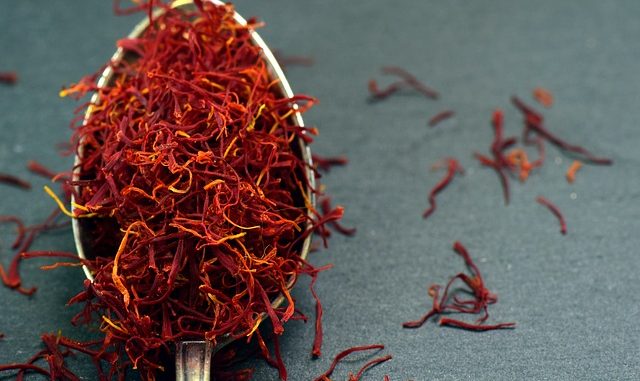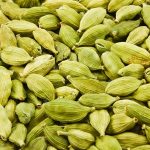
If you are lucky enough to visit Turkey or Iran, or even Saffron Walden, you might be lucky enough to see fields of purple crocus. These are grown purely for their yellow stigmas which are harvested from Crocus sativus L. It is one of the most valuable commercial plant materials and is used mainly as a food colouring and flavouring agent.
Three main secondary metabolites include crocin, picrocrocin and safranal which are responsible for colour, a bitter taste, and odour and aroma, respectively. Many of the clinical benefits have been ascribed to crocin which is effectively extracted from saffron (Mohajeri et al., 2010).
Saffron has been used for centuries as a medicinal herb for treating various health conditions and ailments. These include asthma, liver disease, various aches and pains, menstruation issues and the generation or pathogenesis of cancer.
Saffron’s Genetic Impact
Saffron helps regulate genes involved with production of enzymes such as metalloproteinase, urokinase.
Saffron & Cell Death
Saffron extracts, saffron essential oil, safranal and crocin have all been examined for their effects on preventing oxidative injury to cells. It appears crocin and safranal can significantly reduce cell death (apoptosis). The effect is mediated by the mitogen-activated protein kinase (MAPK) signaling pathway (Rahiman et al., 2018).
Cancer Treatment
A number of studies have been reviewed which look at the anti-tumor and anti-cancer properties of saffron (Khorasanchi et al., 2018). The types of cancer which are affected include lung cancer, breast cancer, leukemia, skin cancer and prostate cancer. The review assesses different mechanisms which are influenced by components in saffron including cell death (apoptosis), stopping the progression of the cell cycle, preventing the expression and in turn production of an important enzyme called matrix metalloproteinase, modulating and influencing a few phase II detoxifying enzymes. Saffron also suppressed production of molecules promoting inflammation. All these biochemical activities and modifications affect cancer formation.
Treatment Of Mental Issues With Saffron
depression and anxiety are two common and major mental health issues. A number of clinical studies have shown saffron and the active constitutents contained in it have antidepressant properties. The ability of the componentry to alleviate symptoms have been compared favourably with antidepressant medications such as fluoxetine, imipramine and citalopram (Shafiee et al., 2018).
Saffron can also alleviate memory issues (Hosseinzadeh et al., 2012).
References
Hosseinzadeh, H., Sadeghnia, H.R., Ghaeni, F.A., Motamedshariaty,
V.S., Mohajeri, S.A. (2012) Effects of saffron (Crocus
sativus L.) and its active constituent, crocin, on
recognition and spatial memory after chronic cerebral
hypoperfusion in rats. Phytother. Res. 26(3) pp. 381-6
Khorasanchi, Z., Shafiee, M., Kermanshahi, F., Khazaei, M., Ryzhikov, M., Parizadeh, M. R., … & Hassanian, S. M. (2018). Crocus sativus a natural food coloring and flavoring has potent anti-tumor properties. Phytomedicine. 43 pp. 21-27 https://www.sciencedirect.com/science/article/pii/S094471131830076X
Mohajeri, S.A., Hosseinzadeh, H., Keyhanfar, F., Aghamohammadian,
J. (2010) Extraction of crocin from saffron (Crocus
sativus) using molecularly imprinted polymer solid
phase extraction. J. Sep. Sci. 33(15) pp. 2302-9
Rahiman, N., Akaberi, M., Sahebkar, A., Emami, S. A., & Tayarani-Najaran, Z. (2018). Protective effects of saffron and its active components against oxidative stress and apoptosis in endothelial cells. Microvascular Research, 118, pp. 82-89 https://doi.org/10.1016/j.mvr.2018.03.003
Shafiee, M., Arekhi, S., Omranzadeh, A., & Sahebkar, A. (2018). Saffron in the treatment of depression, anxiety and other mental disorders: Current evidence and potential mechanisms of action. Journal of Affective Disorders, 227, pp. 330-337 DOI: https://doi.org/10.1016/j.jad.2017.11.020


Leave a Reply